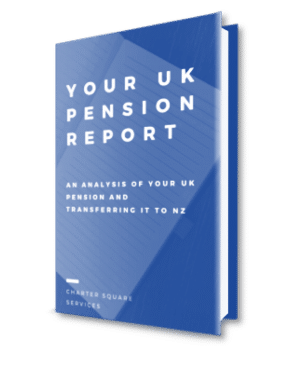General FAQs
Most frequent questions and answers
How do I track down lost UK pensions?
This is the most usual of QROPS questions as people often lose track of their UK pensions. If you have lost track of a former employer’s fund details, you can ask the Pensions Service to trace it. A request can be made online:
https://www.gov.uk/find-lost-pension
Or alternatively if you believe that your pension may be only one of many assets that you have lost track of you can use the following service:
http://www.uar.co.uk/
You can also contact your Independent Financial Advisor (IFA) in the United Kingdom with the details of who you were working for and the name of the pension provider. They will be able to send a request to the provider on your behalf to get the details of the pension.
Can I organise a transfer to a QROPS myself?
The process of arranging a transfer from a UK pension scheme to a QROPS can be complex and time-consuming with considerable scope for errors and delays.
The majority of QROPS providers will only allow pension transfers through their appointed intermediaries as they can take greater reliance in the new world of anti-money laundering and counter terrorism financing requirements for client due diligence. And if you try and “go direct” you may pay more in terms of provider fees as some intermediaries will have negotiated a reduction from the published fee scale.
Furthermore, if you have a defined benefit/final salary scheme that has a cash equivalent transfer value of over £30,000 you must get advice from an FCA (Financial Conduct Authority) regulated adviser before the transfer can proceed.
Are there any circumstances in which I shouldn't transfer to a QROPS?
Yes but these are relatively unusual. In most circumstances as long as you are non-UK resident and intend to remain so for at least five complete UK tax years the benefits to you can be immense.
If, however, your fund contains valuable rights these may not be economically efficient to transfer. An example of such rights might be Guaranteed Annuity Rates (some we have seen in excess of 17%) or protected rights with annual high adjustments.
Can I transfer the funds and assets in my UK pension scheme or do I have to liquidate them into cash?
This will depend on your existing pension provider and the assets that you hold in your UK pension scheme. Generally a transfer will be quicker if converted into cash. It can also prove costly and time-consuming to attempt to transfer the existing assets.
If your UK pension fund is held with an insurance company or with a final salary scheme then the only possibility is a cash transfer.
Can I transfer the funds and assets in my UK pension scheme or do I have to liquidate them into cash?
This will depend on your existing pension provider and the assets that you hold in your UK pension scheme. Generally a transfer will be quicker if converted into cash. It can also prove costly and time-consuming to attempt to transfer the existing assets.
If your UK pension fund is held with an insurance company or with a final salary scheme then the only possibility is a cash transfer.
How long will a transfer to a QROPS take?
This is the most difficult of QROPS questions to answer, as it is entirely depending on your ability to move quickly and your UK provider. Most transfers from UK pension schemes to QROPS take two to three months. However, transfers from some schemes, in particular public sector schemes, can take longer.
If I have already drawn income from my UK SIPP can I transfer to a QROPS?
Yes. A QROPS can be used to receive transfer values from any UK registered pension scheme even where benefits have been taken. The exceptions however are annuities in payment and “scheme pensions” from company pension schemes.
What will happen to my QROPS fund following my death?
Most NZ QROPS will allow the remaining funds to be distributed at the discretion of the scheme trustees to your nominated beneficiaries. This is irrespective of whether benefits have been taken. Where this is not the case they will pass to your estate.
The effect of this approach is to avoid liability to UK Inheritance Tax and for those who satisfy the “five year rule” to avoid any liability to the 55% special lump sum benefit tax charge.
How and when can I take benefits from my QROPS?
There is no limit to the size of funds that may be accumulated within a QROPS.
There is considerable flexibility in the timing of taking benefits from a QROPS. Usually benefits may be taken between the ages of 55 and 75.
What investment choice and freedom will I have with a QROPS?
The investment choice will normally be very wide if you are intending to convert your funds into New Zealand dollars, and the popular concept of a self-invested personal pension exists in New Zealand as well. If you want to keep your funds invested in British pounds sterling your investment options are more full through the SIPP options.
You may also appoint an investment manager to make the decisions for you or with you.
Who may apply to transfer their pension into a QROPS?
Anybody with UK private pension rights that have not been used to secure an annuity or people in unfunded public sector schemes. Occasionally situations are encountered where a transfer cannot take place for technical reasons but this is very rare.
If I transfer my UK pension into a QROPS will I have to buy an annuity?
No, although you may do so if you wish. UK law does not compel you to buy an annuity either but if you do not do so there will be a 55% tax charge on the fund following your death after benefit has been taken.
Having your pension fund in a QROPS means you can keep your fund invested in real assets and gain the advantage of passing any remaining funds upon death to your nominated beneficiaries free from UK taxation.
What is the minimum value that can be transferred to a QROPS?
There is no specific minimum. However, due to cost, if a QROPS is to be held as a longer-term investment vehicle the minimum value for transfer ought to be in excess of £25,000 or so.
Who controls my pension during the transfer process?
You are always in control of your pension. The UK provider will transfer the value of your fund directly to the Trustees of the new scheme that you become a member of. Therefore, the money is always held in your name or by Trustees on your behalf, and is never under any one else’s, such as your financial advisor or pension transfer agent’s.
Can I leave my pension in the UK for a while before transferring it to New Zealand?
You can leave your pension in your fund in the UK for as long as you wish. There may be benefits to doing this for you, such as, being able to take advantage of a future demutualization of your pension fund provider, or wait for an exchange rate movement.
However, if any part of your pension comes into annuity payment in the UK (i.e. you receive a payment from your pension fund) that fund is no longer transferable.
FAQs on Tax
What are the UK tax implications if my pension fund is substantial?
A transfer to a QROPS will be what is known as a “benefit crystallisation event”. This may give rise to a tax charge if the amount transferred exceeds the “lifetime allowance” (LTA) – which has been £1.0 million from April 2016 onwards.
If, however, you have registered for “primary protection”, “enhanced protection” or “fixed protection”, then lesser tax charges may apply.
It is worth noting that the benefit of a QROPS is that once a large pension is outside of the UK then any further increases will fall outside the lifetime allowance rules.
In addition, the tax on transferring a large pension out of the UK which is in excess of the LTA is lower than if you take the benefits in the UK. The tax rate on the funds in excess of the LTA is only 25% on a QROPS transfer, as opposed to up to 55% on withdrawal of the funds from the UK scheme.
How will any benefits or withdrawals be taxed?
Some QROPS jurisdictions do not require tax to be deducted at source from income or lump sums when taken – such as New Zealand. The tax treatment of any income or lump sum you receive will depend upon where you are tax resident at the time and in some cases also depend on the wording of any double taxation treaty between the QROPS jurisdiction and your country of residence.
Will payments from a QROPS be reported to HMRC?
QROPS providers are not required to notify HRMC of any payments from transferred pensions unless the member is:
- Resident in the UK when the payment is made, or
- Although not resident in the UK at that time, has been resident in the UK earlier in the tax year in which the payment is made or in any of the ten tax years immediately preceding that tax year (the “ten year rule”) and
- For the first 10 years following the transfer
So long as any benefits taken within the “five year rule” are consistent with the benefits that could have been taken as a UK resident then no UK tax consequences arise.
There is an exception however where the QROPS has been used to invest in what is known as “taxable property” which includes for example residential property. Such schemes are subject to indefinite reporting of payments made to HMRC.

